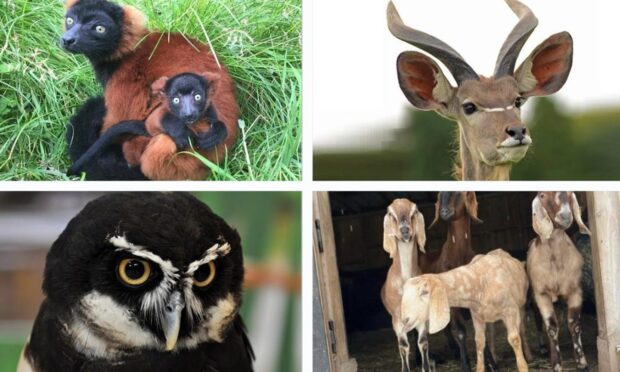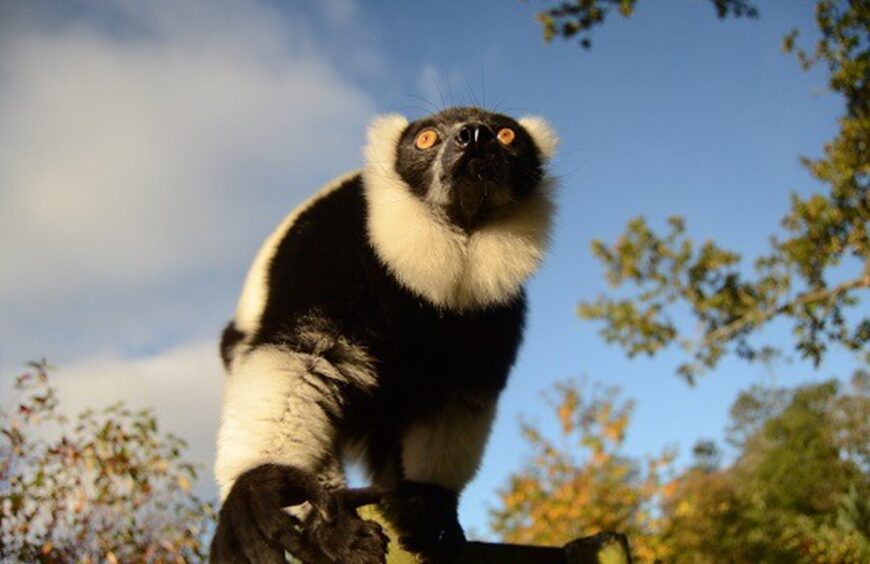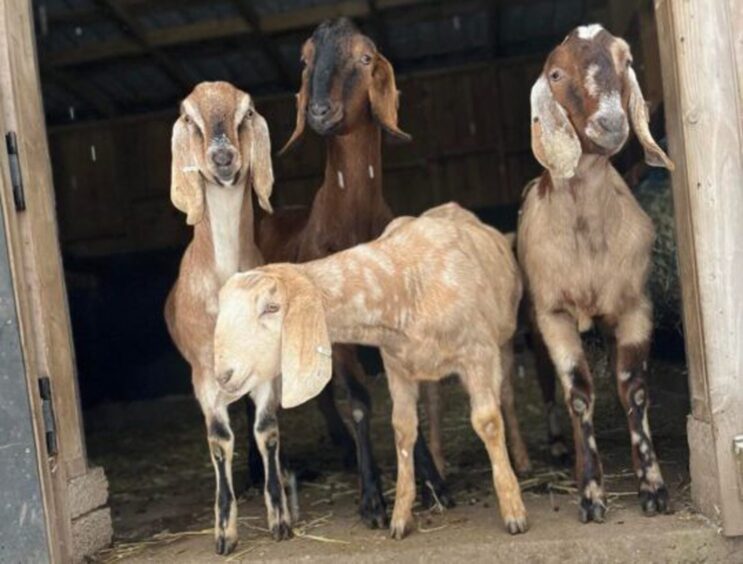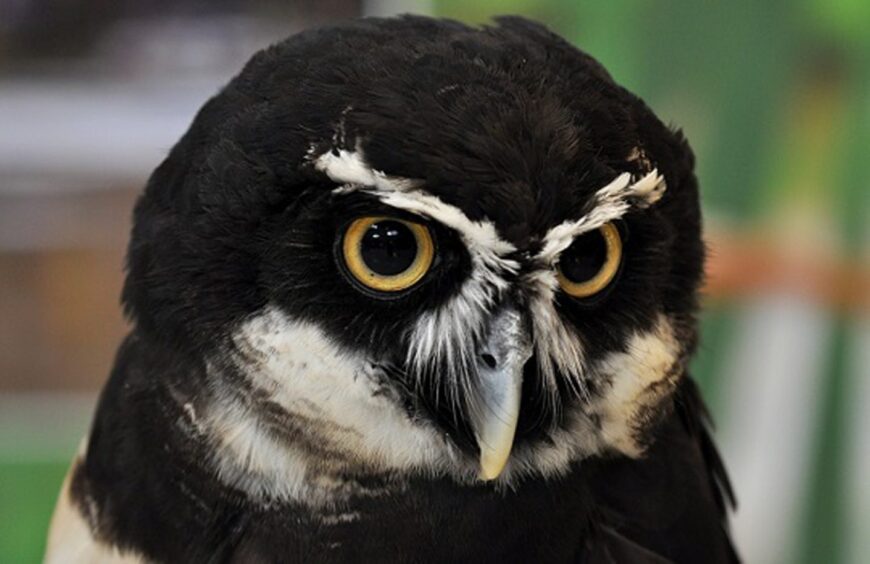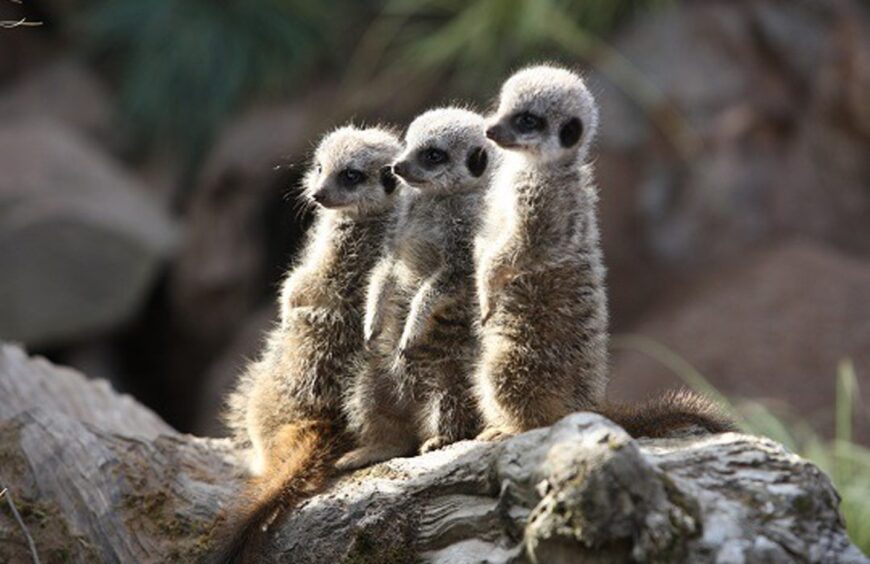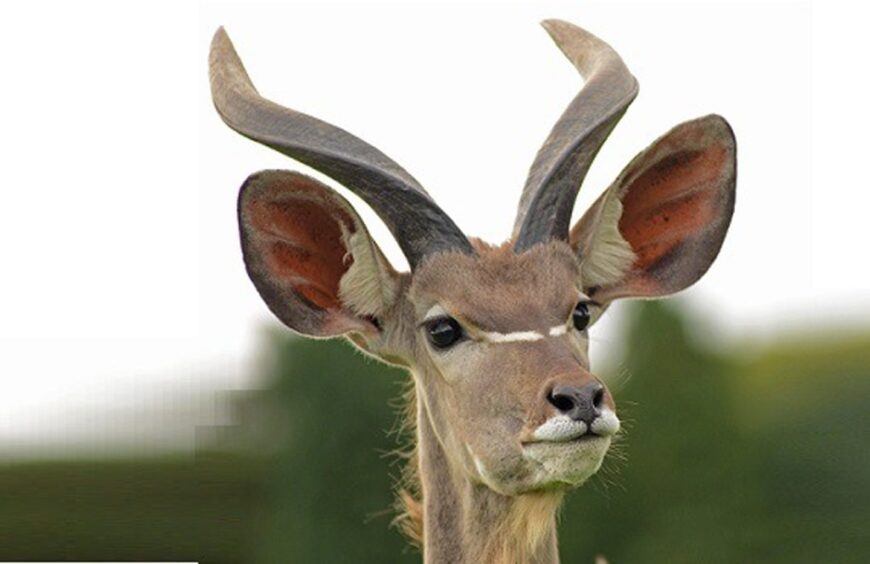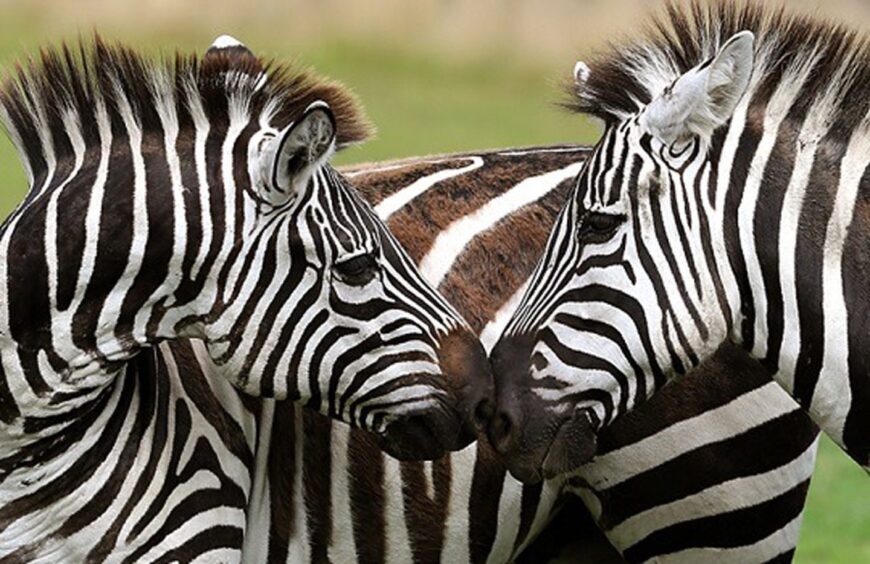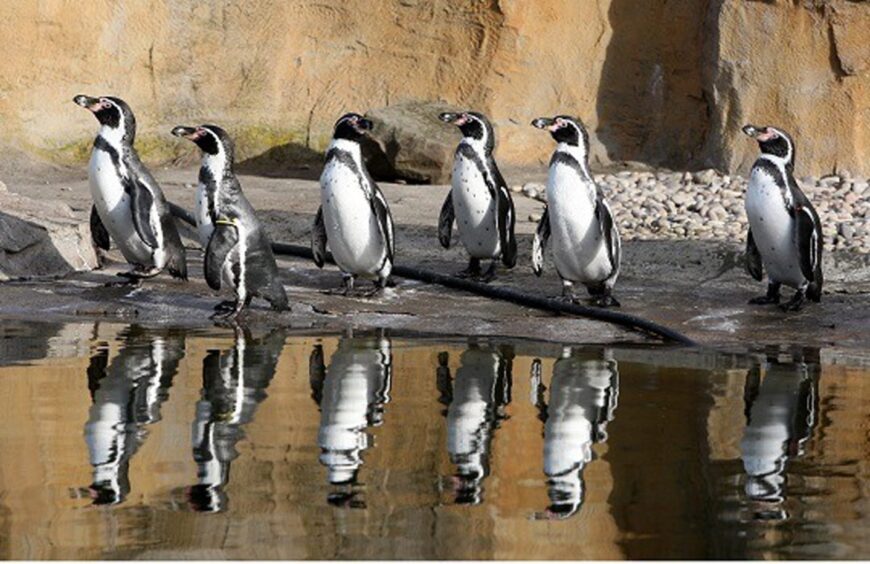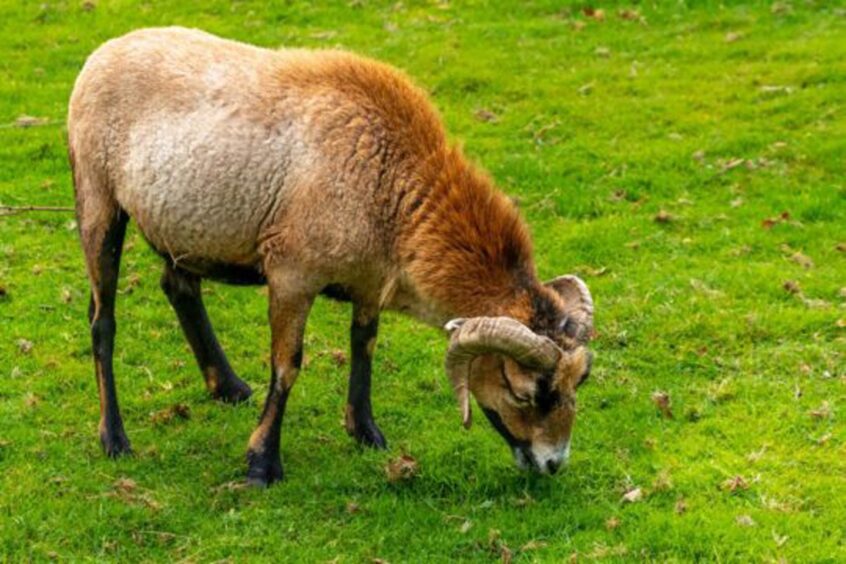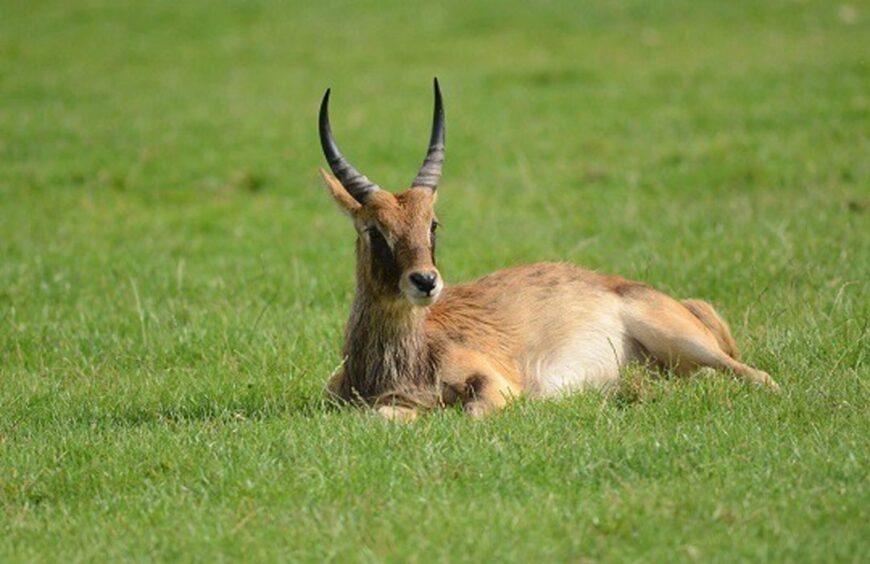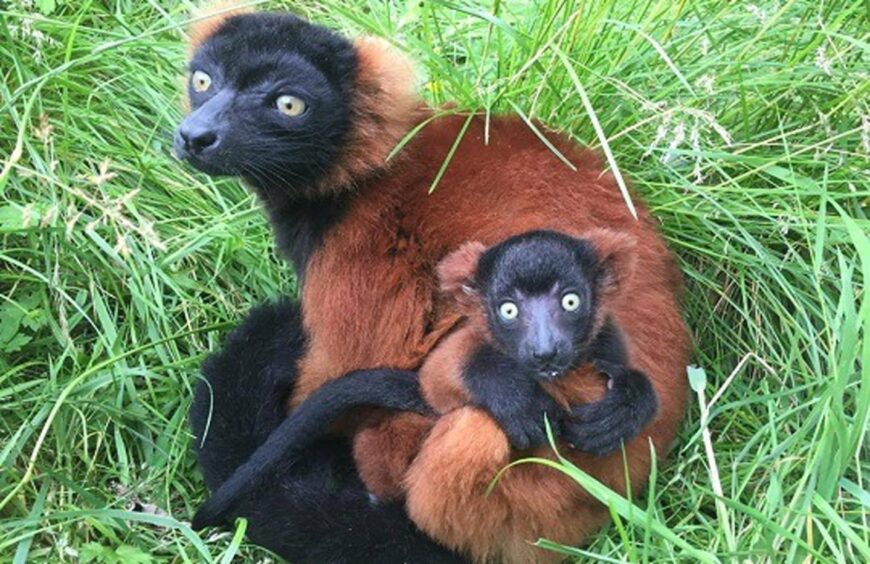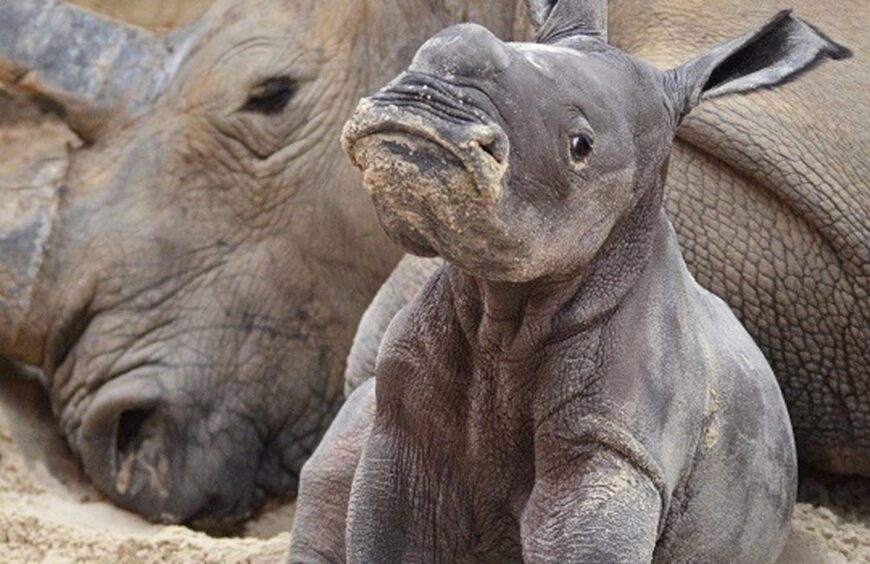Blair Drummond Safari Park is one of Scotland’s top attractions for a family adventure.
Located on 160 acres of land in Stirlingshire, the attraction has provided a fun and educational day out for millions since it opened in 1970.
Home to hundreds of animals, some of the park’s more well-known residents include tigers, African lions, giraffes and the world’s largest land mammal – the African elephant.
However, with that much to see not everyone gets their moment in the spotlight.
With Blair Drummond set to open its doors for the 2024 season on Saturday, March 16, The Courier takes a look at 11 unusual animals you can see at Blair Drummond Safari Park.
1. Black-and-white lemur
The black-and-white lemur is one of the most endangered species of lemur.
Endemic to Madagascar, it is thought almost 90% of the natural forest on the island has been destroyed since human habitation.
With human-like hands and specially adapted big toes on their back feet, they have excellent grip and spend most of their time in the trees.
The black-and-white lemur is one of five species found at Blair Drummond.
2. Anglo-nubian Goat
With distinctive long floppy ears, the Anglo-nubian goat is one of the tallest and heaviest species of goat.
A domestic British breed, the goats are a result of cross-breeding between native goats and large lop-eared goats imported from India, the Middle East and North Africa.
This breed of goat is friendly and affectionate and is often kept by farmers due to its high-quality milk.
3. Spectacled owl
This large tropical owl gets its name from the ring of white feathers, or ‘spectacles’, around its eyes.
Native to the rainforest, spectacled owls are more often heard than seen.
They will conceal themselves in the lower layers of the forest and make a series of low-pitched knocking sounds, like the noise of a woodpecker tapping.
This breed of owl has a lifespan of up to 25 years.
4. Meerkats
Best known for selling car insurance with Russian accents, the meerkat is actually a small mongoose native to southern Africa.
These cute creatures are of slim build and characterised by a broad head, large eyes and pointed snout.
Meerkats are curious and are often seen standing upright scanning for any potential predators.
If danger is spotted, Meerkats will bark loudly or whistle to alert others in the mob.
5. Greater kudu
The greater kudu is a large woodland antelope, found throughout the African bush.
A kudu uses its large and sensitive ears to detect danger and, if threatened, usually stands perfectly still to blend in with its surroundings.
The lifespan of a kudu is around 12 years in the wild and up to 23 years in captivity.
6. Grant’s zebra
Grant’s zebra is the smallest species of the plains zebra family.
These striking creatures are found throughout Africa and will often be spotted grazing among giraffes.
Grant’s zebras typically live 20 years.
7. Humboldt penguins
The Humboldt penguin resides along the west coast of South America – most commonly in Peru.
However, hunting and over-fishing by humans have led to a decline in Humboldt populations.
The safari park says these little birds have a ‘vulnerable’ conservation status.
8. Cameroon sheep
Also known as the Cameroon Dwarf, this breed of domestic sheep is native to Cameroon and other surrounding West African countries.
It is one of the world’s oldest surviving breeds and it is believed there are less than 1,000 alive today.
Unlike species we have become accustomed too in Britain, the Cameroon sheep does not grow wool and does not need to be shorn.
This is because they have an extra undercoat which is automatically shed in the spring.
9. Kafue lechwe
A semi-aquatic antelope, the Kafue lechwe is an excellent swimmer and is only found in the Kafue flats in Zambia.
It has unique, elongated hooves and its legs are covered in a water-repelling substance, making it easier to move through deep water.
It is listed on the International Union for Conservation of Nature Red List as vulnerable.
10. Red ruffed lemur
The second species to appear on this list, the red ruffed lemur is one of the most endangered species of lemur.
These funny-looking primates predominantly feed on fruit but also eat flowers, nectar and some leaves.
Like all lemurs, the red ruffed lemur is native to Madagascar.
11. Southern white rhinoceros
The southern white rhinoceros is the most widespread rhino – found in the savannahs of Africa, and in the swampy grasslands of Asia.
Despite their fearsome appearance, rhinos are generally quite timid creatures and spend most of the day grazing.
Southern white rhinos have a lifespan of 25 to 40 years.
Blair Drummond Safari Park will reopen for the 2024 season on Saturday, March 16.
The park will be open between 10am and 5.30pm, seven days a week.
